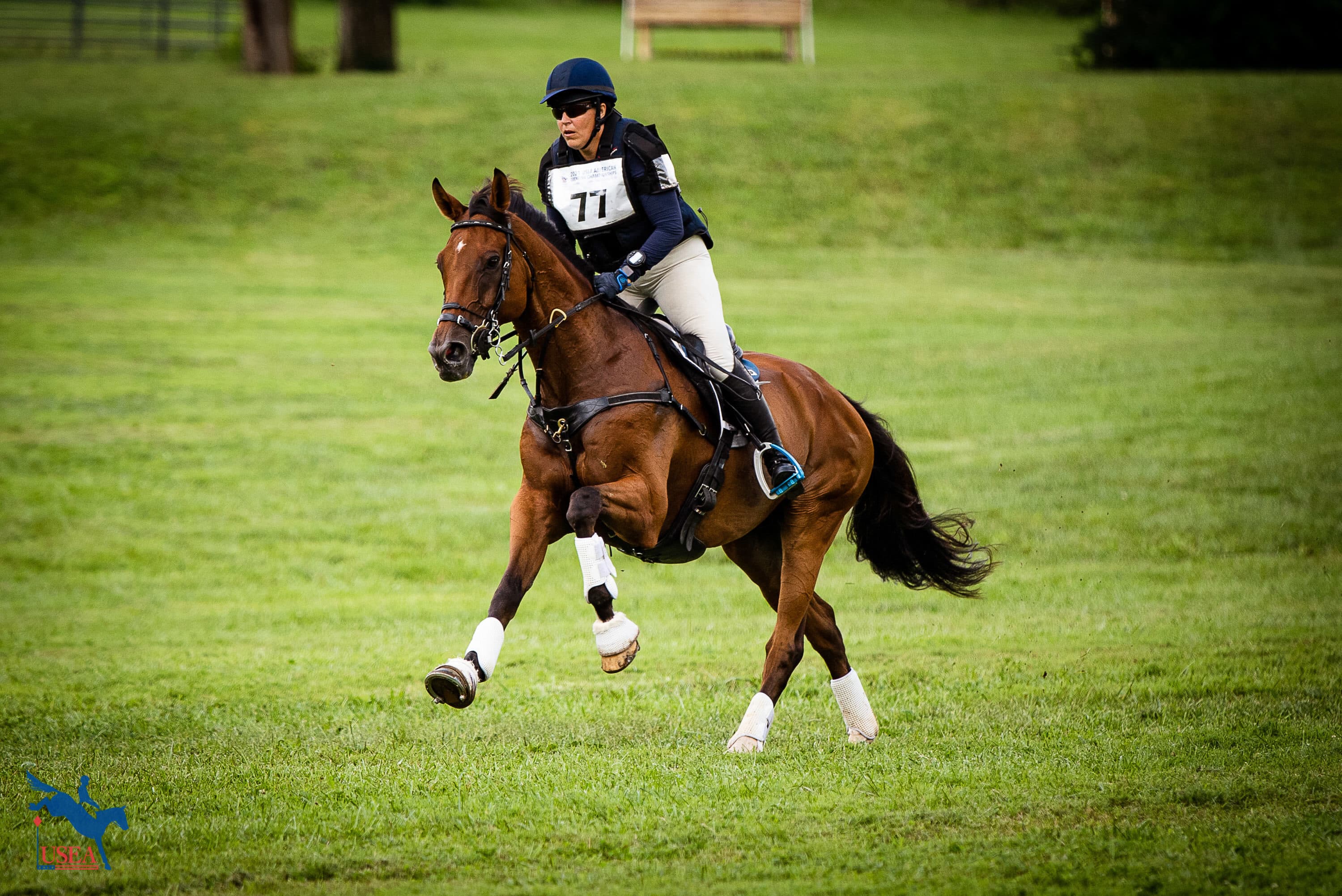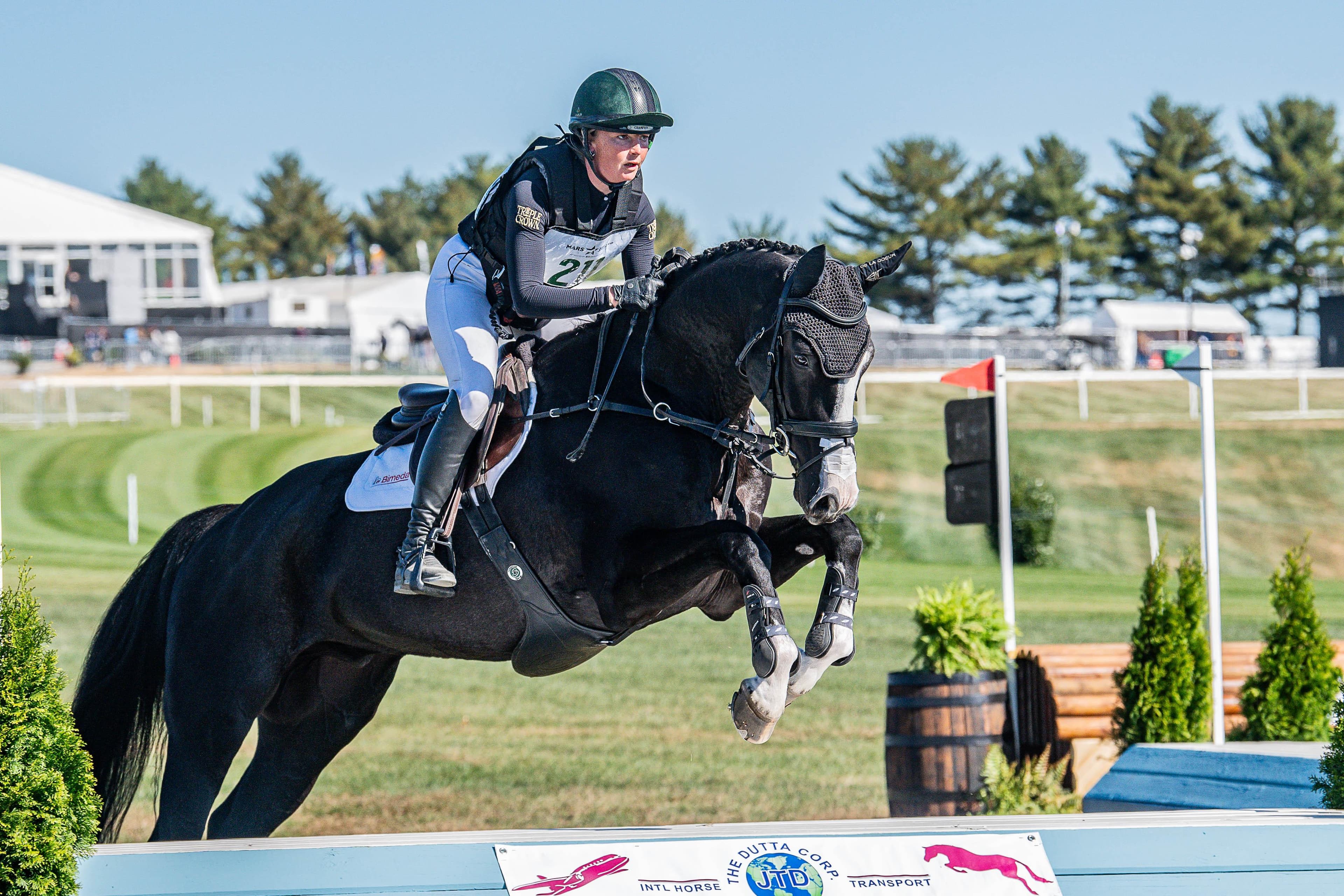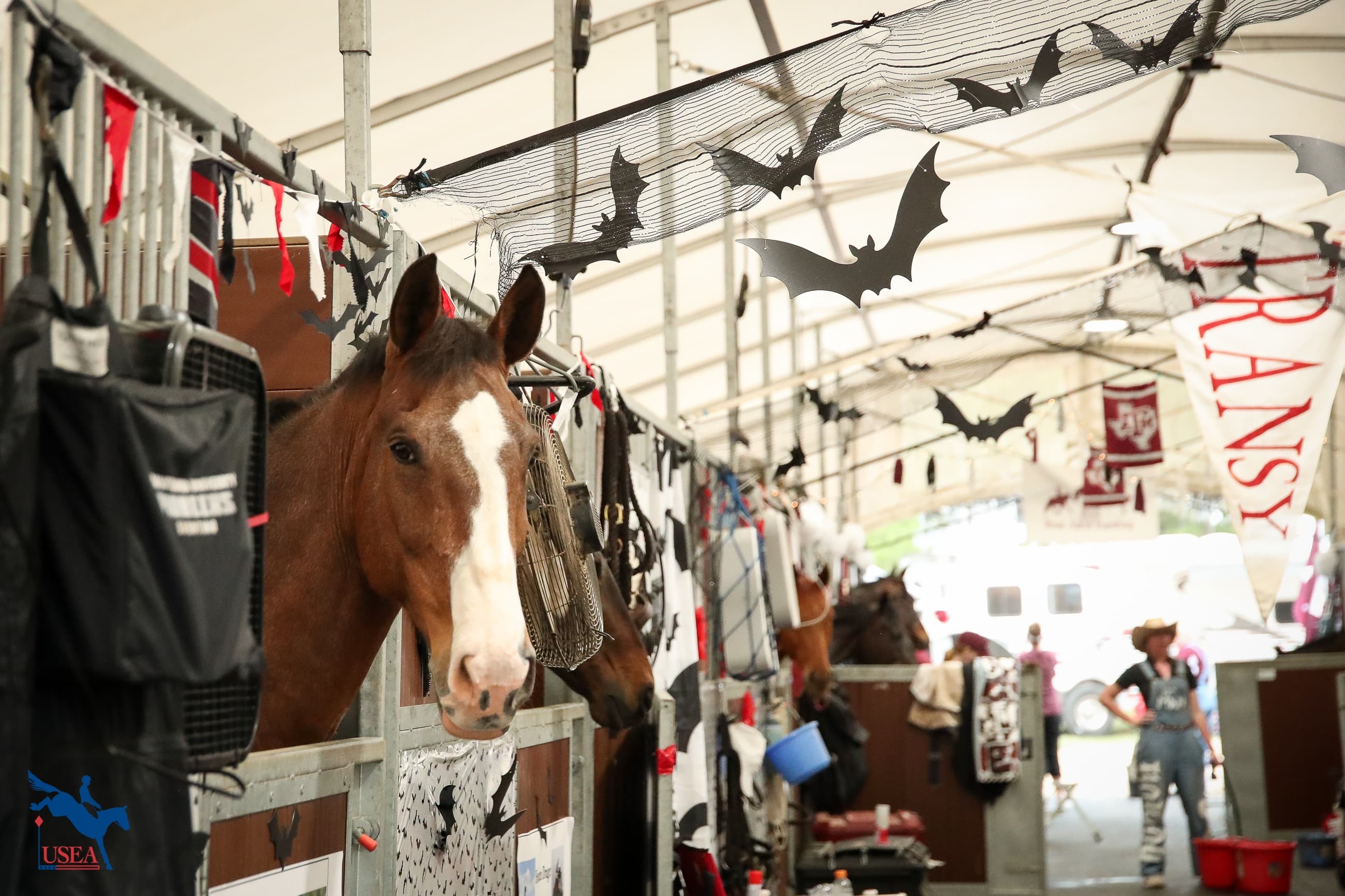The Secret to a Good Gallop with Doug Payne

We could lead with “no Payne, no gain” or some other clever quip but in reality, the fewer gimmicks the better when it comes to training advice. Doug Payne knows how and when to come back to the basics and how to build confidence in a young horse so that they shine at their absolute brightest when the spotlight turns their way. But the key to everything come competition time? The gallop.
“In general, the gallop—for horse and rider—is going to take time to develop. They’re really cantering to start getting fit. Regardless of level and regardless of speed, I would be a huge stickler that they gallop always in a very uphill balance and light contact, and if you’re lucky enough to be starting a horse from scratch, or a young one—whatever it may be—if you can teach them to gallop near enough on a loose rein, and maintain that same balance, that is a critical skillset that will translate into far more adjustability and honestly quickness at the top end of their career.
With the babies, I generally ride them in a full cheek snaffle, usually double jointed, and I try my best to train them in a way in which they learn from day one that they gallop really uphill, light, soft and in a round shape because in the long run, when they’re going three-star and up, at some point they’re going to hit the wall and get tired and if you’re relying on the bit to help you, inevitably they go a little bit numb and the bit becomes less and less effective so that last quarter of the course is going to be really challenging and I’d really rather not rely on that.
If you can teach them to be super light with your contact then they will be more adjustable for sure, which means you can set up later. Roughly, each half-halt you take on course they say is roughly a second, more or less, so if you can cut one out per jump that’s at least 30 seconds faster right there. Basically, in order to do that, I would start off quite low.
If there’s a horse that’s about to go Beginner Novice—maybe it’s their first event—it’s important to take him out of the ring twice a week and do some cantering. At home, maybe you’re going 400 meters a minute, maybe 425, so not crazy fast at all. If they get heavy or start to pull or get kind of wooden feeling—anything other than being light, soft and in a round shape—then I would abandon going around the perimeter field. Put them onto a circle or do some transitions—whatever it might be to get that light feeling again. And then once you get the light feeling reestablished, then go back out onto the outside of the field and keep going with it.
I wouldn’t make it a punitive situation where if they lose it you get after them or get mad but I would say it’s like ‘do not pass go.’ The moment you’re heavy, wooden, on the forehand, we’re going to just throw a circle in or if you have the ability to do it out in a field, set up three little cavalettis and a bounce or some other little footwork exercise that would honestly make it more difficult for them if they were on the forehand and pulling. You’re going to be asking them to collect and put themselves back together and then the exercise that you might be able to turn them into would also reinforce that same theme. Bounces are super helpful. Two would not be terribly useful, it has to be three or more. If you have three, four or five, they’re going to have to rock back. I would set those up 18” or lower at 10 feet or so—have something a little bit snug. In many ways, it’s better if it’s small because if they make a mistake, they’re never going to lose confidence over a foot-high obstacle. Even if it’s a total mess, they’re not going to shut down. It won’t happen.
I like to think with training horses, you’re going to present them with something that’s mentally challenging and physically easy or the flip of that—physically challenging, mentally easy. So have a ton to think about but have it little so the repercussion of the mistake is minimal, or if you want to work on something bigger, I’d make it a little more straight forward so it’s not everything all at once.
Especially in the sport of eventing, the partnership is probably the—one of the—major components of success. If you’ve got a wicked schoolmaster, he probably knows his job 100% but most people aren’t going to be that lucky, so starting a younger horse I think the partnership is a key component and you’re honestly going to know each other incredibly well. It’s sort of the same thing we were talking about with this exercise: generally speaking, you’re starting them quite green and quite small so they’re going to be exposed to every mistake you might have when the impact of that mistake is minimal, so at that point they’re going to learn—you both are going to learn—to adapt to each other. And I think you’ll probably end up having more success later on as a result of that.
The best of the bunch at the moment would be Quantum Leap. We bought him as a weanling and he does all three phases in just a snaffle. Cross-country wise, he’s awesome. He’s just super, super light—you don’t ever really have to touch him. It just makes it a pleasure. We were kind of joking around when he was going training [level]. I used to play a game with him, ‘how long can I go around the course without touching the reins.’ You could near enough just about finish the entire [course] without ever having any contact whatsoever. And that would only be once he’s confident, right? You’re almost through a season and you’re thinking about moving up and that’s kind of the idea I wanted; it should be a total no brainer that you’re not challenged by anything. Start making your approaches a little tighter and start making everything harder than it needs to be, just to see where you’re at. Take your time. Generally speaking, they’re very kind creatures and they’re going to want to help you out.”














